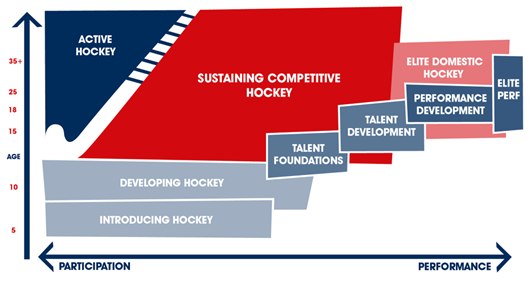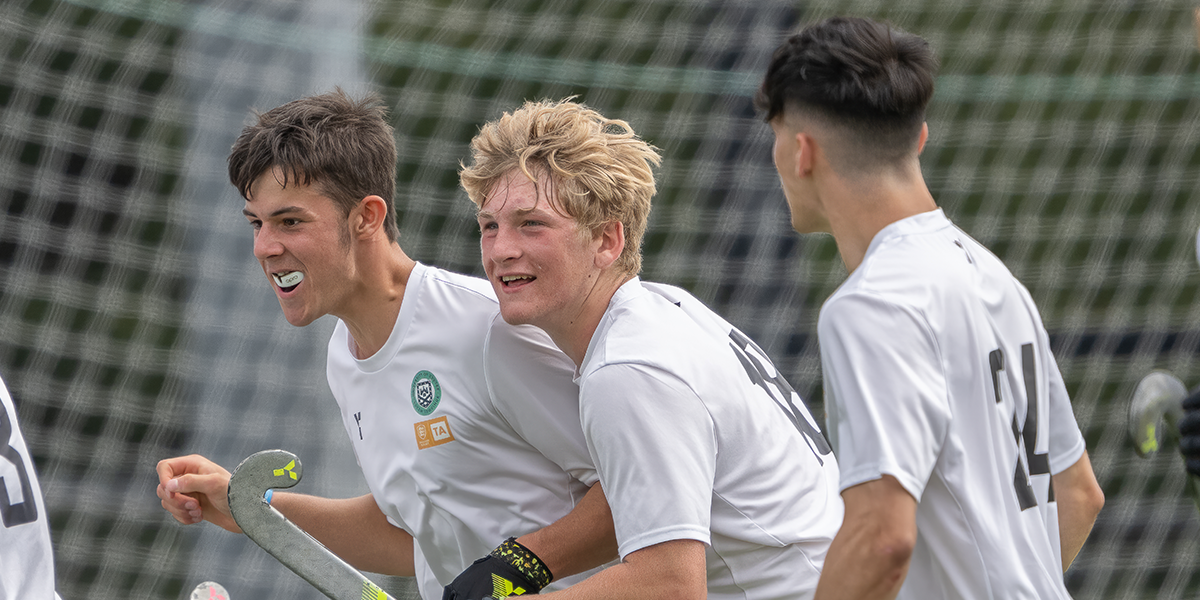Putting the player at the heart of the sport.
The Player Development Model has been established to represent the hockey landscape and the hockey playing population into nine segments that position the player at the heart of hockey.
It shows how people enter, develop within and through, and interact with the sport, based on the needs and motivations of players. The emphasis is on providing great experiences and exceptional environments for players to be successful and stay in the sport.

The model recognises that players enter the sport at different stages and the ages are a guide only. They develop at different rates and have different needs. It positions the ideal experiences and environments across the nine segments that will support individual player’s needs.
Some hockey clubs cater for all levels, ages and interests from 8-80 years equally while others focus more on particular participant segments.
Defining the ideal experiences and environments for each of the nine segments allows us to ask ourselves how we can, collectively, best support a player’s experience and development both on and off the pitch.
Whether you are a club, school, parent, coach, umpire or the National Governing Body, the Player Development Model provides clarity on the why, how and what for player development and supports greater connectivity across the sport.
- INTRODUCTION TO HOCKEY A fun introduction to hockey that develops a broad range of qualities in a playful context that allows children to enjoy their first experiences of the sport.
- DEVELOPING HOCKEY Fun and inspiring environments that further develop a young person’s qualities and play an important part in contributing to sustaining hockey or developing talent in later years.
- SUSTAINING COMPETITIVE HOCKEY Maintaining and refining player qualities that allow them to play ‘competitive’ hockey and access the wider benefits of the game (social, fitness, etc) for lifelong participation.
- ACTIVE HOCKEY Fun, social and informal environments that allow players to pick up a stick in a way that suits their lifestyle.
- TALENT FOUNDATION A fun, developmental and positive environment where players realise that they are good at hockey, love playing, and want to play as much as they can. May be involved in other sporting activities.
- TALENT DEVELOPMENT A challenging and supportive environment where players know they are good at hockey and are determined to get better. Focused on connecting with performance and taking responsibility.
- PERFORMANCE DEVELOPMENT An environment that keeps the potential international athlete of the future in mind, with the aim of providing high quality experiences and satisfaction through accomplishment. At this level, players will have a clear line of sight to senior international hockey, through U21 and other age group competitions, and potential early exposure to senior international hockey itself.
- ELITE DOMESTIC HOCKEY An environment that drives regular and challenging competition that delivers sustained performance on a domestic and European club stage. This environment could develop players for the talent and performance development and elite performance and support those players exiting those environments, who still love to challenge themselves.
- ELITE PERFORMANCE Engaged in and committed to high level senior international hockey. There is a culture of continuous improvement and creativity, with a clear goal of delivering peak performance in significant tournaments and matches on the world stage.
We have identified five different hockey systems within the overall hockey landscape and these systems identify how people can come into, stay in, get better at and succeed in hockey.
The Talent System is just one of the systems that make up the hockey landscape. Other systems that make up the Hockey Landscape are the Children and Young People System, Recreational System, Competitive Hockey System and Performance System.
The Talent System comprises two segments of the Player Development Model, ‘Talent Foundations’ and ‘Talent Development’, and is where young players with potential are developed and supported.
To help define the ideal experiences and environment for the different systems we have developed a player experience model...





